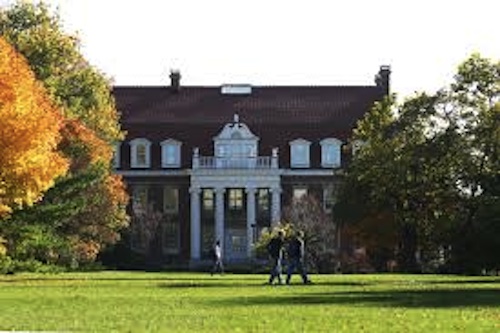In the past eight years — yep, a decade basically — there’s only one school in America that has consistently hired full-time faculty while slashing admin roles, and that school is … drumroll … Iowa State University. Here’s the main article with the data and here’s one thing to note: just because a college/university is hiring more admin people doesn’t necessarily mean they’re turning away from student-facing roles. They could be hiring admin people who will work with students on individualized plans and “learning outcomes,” just not in the professor role. The lead author of the report notes as much:
Colleges “seem to be investing in jobs that involve working face-to-face with students,” says researcher Donna Desrochers, lead author of the report. “It’s not all just back-office jobs they’re creating.”
This is all from the Delta Cost Project, which comes from the American Institutes for Research. There’s a lot of interesting data points in the report at that link, but one that affects most of America in some way might be this:
Faculty salaries were not the leading cause of rising college tuitions during the past decade. Increased benefits costs, non-faculty positions added elsewhere on campus, declines in state and institutional subsidies, and other factors all played a role. The average salary outlay per full-time faculty member has stayed essentially flat from 2002 to 2010. But additional savings from shifting to part-time instructors have not been enough to offset the costs associated with continued hiring and rising benefits expenditures. Compensation costs per FTE student have continued to rise modestly at most four-year institutions as a consequence of these staffing, salary, and benefits changes. Tuition prices increased even faster, however, as tuition dollars replaced revenue lost from other sources.
So your tuition hasn’t been jacked because the professor you never see is making $300K (common narrative students will bemoan); rather, it’s because of the hires in other areas, states going lean (Michigan just passed a 6.1 percent increase to higher education, but remember that three years ago they had a 15 percent decrease too), and benefits costs (which are screwing up a lot of businesses, for-profit and otherwise). Check out this over-arching trend line, though: there are jobs in higher education, and it’s growing faster than the previous cycle — even during a time with one of America’s more drastic recessions:
The overarching trends show that between 2000 and 2012, the public and private nonprofit higher education workforce grew by 28 percent, more than 50 percent faster than the previous decade. But the proportion of staff to students at public institutions grew slower in the 2000s than in the 1990s because the recent expansion in new positions largely mirrored rising enrollments as the Millennial Generation entered college. By 2012, public research universities and community colleges employed 16 fewer staff per 1,000 full-time equivalent (FTE) students compared with 2000, while the number of staff per student at public master’s and bachelor’s colleges remained unchanged.
Iowa State University, for its part, says that its goal is to “support students and faculty.” That’s often the stated goal of many universities, but in practice the true idea is (a) do research and (b) get publicity for said research. (That is a generalization, but … it is fairly common, especially at larger places.)
Some other colleges disputed the accuracy of the data in this report, while also claiming the crux of the idea was still accurate:
“The thrust of the report is absolutely correct,” Gorton said. “More and more resources are devoted to bureaucratic agendas, and fewer resources to classroom excellence.”
That’s from the faculty president at the University of Northern Iowa.
Also bear in mind: this is at a time when about 60 percent of D-1 football coaches are making $1 million or more per year.
I’d say this: university jobs can be very attractive, in part because many universities have above-average health care plans and child-care plans, and those are both things that really make a dent in middle-class family wallets. So I see while jobs are rising in that regard; also, because universities tend to be slow-moving as compared to for-profit businesses, it’s much easier to get a job at a university and kind of coast for a while while still collecting a solid paycheck (not at the faculty level per se — “publish or perish” — but definitely at the admin level). Whatever your context or viewpoint of this research is, though, the basic idea of higher education in the U.S. needs to change. It’s too expensive, it creates too much shackled debt for kids coming out, and the pay-off isn’t even that tremendous in the grand scheme of things (it’s great to have a college degree, yes, but it by no means guarantees a job or even living by yourself in the modern era).
I’m not sure if MOOCs are the answer, or someone finding a way to completely blow up the financial system on which going to college is based, but something needs to be done in the next 1.5-2 generations of American life. As it stands now, it’s not tenable.

The professor verses administrator question addresses a complex issue but does not answer the professor verses professor question, “Are they hiring teaching professors or are the hiring researcher professors?” That is the core issue.